Cornwall, a county located at the southwestern tip of England, is renowned for its picture-perfect coves, sandy beaches, and stunning landscapes. But, did you know that Cornwall is also home to a diverse range of bird species?
The county’s unique location, with its varied topography, including woodlands, estuaries, river valleys, and coastlines, provides habitats for over 400 bird species.
From the enchanting blue tit to the majestic buzzard, the region is a birdwatcher’s paradise. In this article, we’ll explore the fascinating avian species that grace the skies of Cornwall, highlighting their unique features and some of the best places to spot them.
So, whether you’re a seasoned birder or an amateur enthusiast, read on to discover the feathered residents of Cornwall.
1. Hoopoes
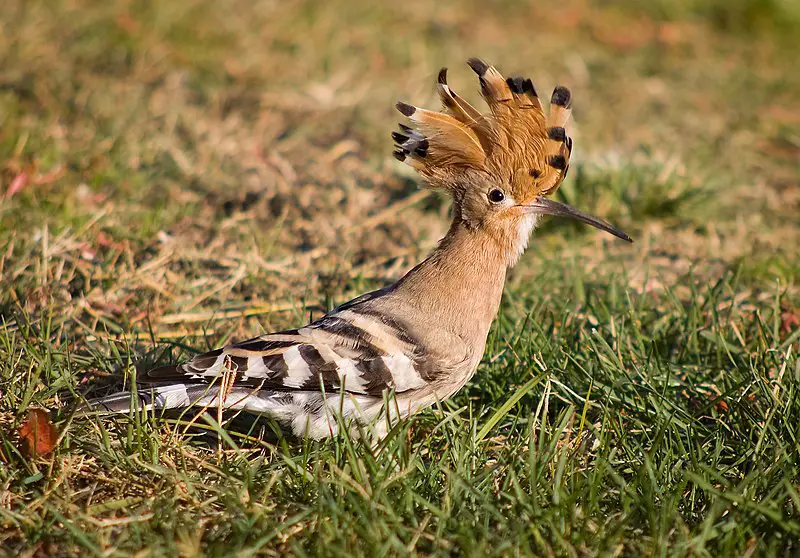
Hoopoes are a fascinating species of bird, found across Africa, Asia and Europe. They have beautiful plumage with unique ‘crowns’ of feathers on their heads.
Three living and one extinct species exist – although for some time they were all classed as the same species: Upupa epops. Some taxonomists still believe this to be true.
These birds are often associated with royalty due to the impressive crown-like crest atop their head, adding an extra element of mystery and exoticism to these creatures.
Hoopoes can also produce loud calls which sound like “hoo-poo” hence why they’ve been given such an apt name.Scientific classification:
| Kingdom | Animalia |
| Phylum | Chordata |
| Class | Aves |
| Order | Bucerotiformes |
| Family | Upupidae Leach, 1820 |
| Genus | Upupa Linnaeus, 1758 |
Also Featured In: Egyptian Birds, Turkey Birds You Should Know
2. Black Redstart
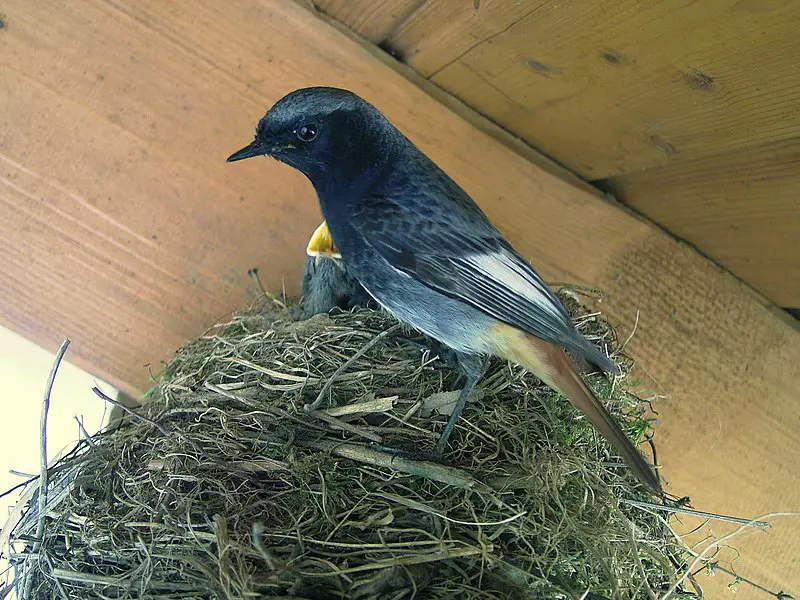
The black redstart is a small passerine bird found in the genus Phoenicurus. It was previously classified as part of the thrush family but now belongs to the Old World flycatcher family.
It has an overall black coloration with striking patches of bright orange or rusty-red on its wings and tail, giving it its name “black redstart”.
The male also sports a prominent crest which he can raise when displaying for females during breeding season.
This species inhabits open woodland areas and generally feeds on insects such as flies, beetles, spiders and caterpillars; although they will supplement their diet with berries where available.
They are often seen perched very prominently from exposed branches near food sources like hedgerows or tree stumps making them easier to spot than some other birds of similar sizeScientific classification:
| Kingdom | Animalia |
| Phylum | Chordata |
| Class | Aves |
| Order | Passeriformes |
| Family | Muscicapidae |
| Genus | Phoenicurus |
| Species | P. ochruros |
Also Featured In: Birds of United Kingdom, Common Birds in the Cities
3. Isabelline Wheatear
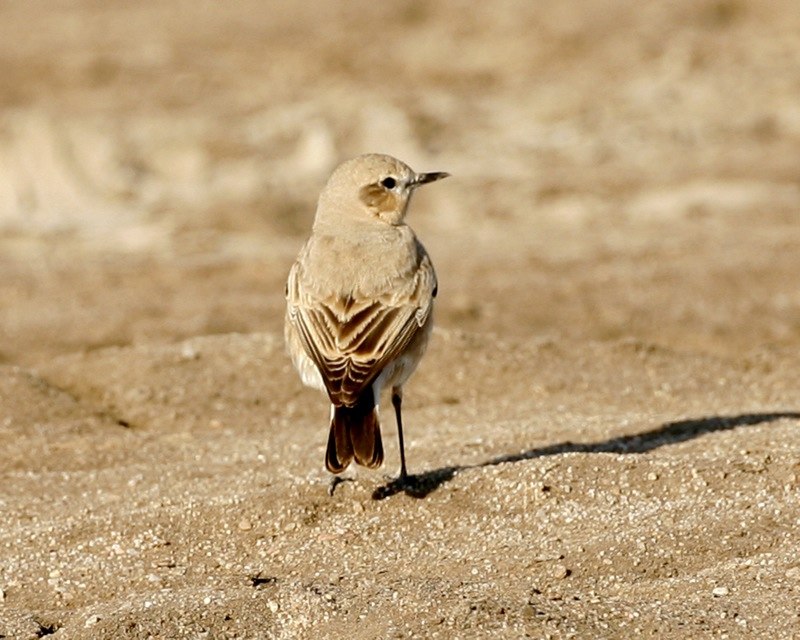
The Isabelline Wheatear is a small passerine bird belonging to the Muscicapidae family. It can be found in steppes and open countryside, breeding from southern Russia through Central Asia all the way down to northern Pakistan.
During wintertime it migrates southwards for warmer climates. Its diet mainly consists of insects which makes this species an insectivorous one.
Its usual hunting ground is on low vegetation or on bare soil where it searches for food with its agile movements and sharp bill.
The males are distinguished by their grey upperparts, light underside with buff markings around wings and tail as well as their white brow stripe that gives them their name: “Isabellina”.Scientific classification:
| Kingdom | Animalia |
| Phylum | Chordata |
| Class | Aves |
| Order | Passeriformes |
| Family | Muscicapidae |
| Genus | Oenanthe |
| Species | O. isabellina |
Also Featured In: Common Birds in Saudi Arabian, Lebanon Birds Live in Semi-Desert Areas
4. Black-Legged Kittiwake
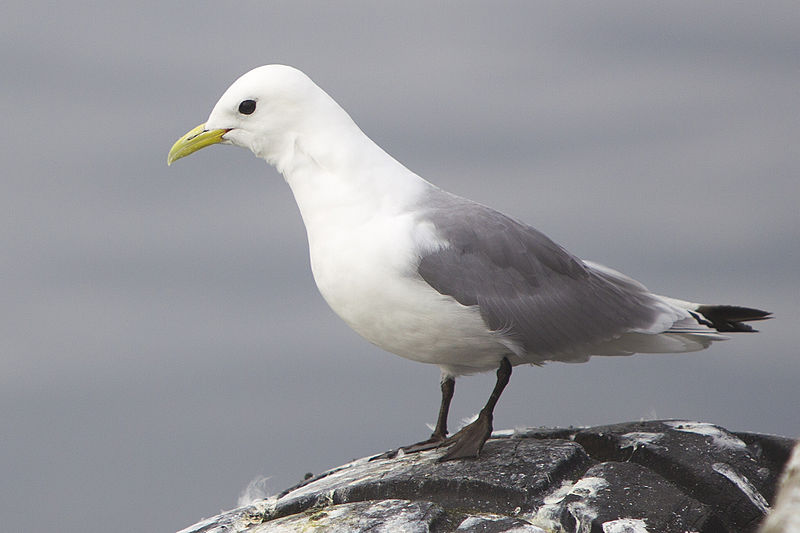
The Black-legged Kittiwake is a seabird of the gull family Laridae. It was first described by Carl Linnaeus in 1758 and its name derives from its distinctive call which sounds like ‘kittee-wa-aaake, kitte-wa-aaake’.
These birds are mainly found along coastal regions with plenty of food sources such as plankton and fish. They have white bodies with slate grey wings and black legs.
The bill is yellowish orange to red depending on age or season.
In winter they migrate southwards away from their northern habitats into warmer waters for breeding purposes before returning again once spring arrives.Scientific classification:
| Kingdom | Animalia |
| Phylum | Chordata |
| Class | Aves |
| Order | Charadriiformes |
| Family | Laridae |
| Genus | Rissa |
| Species | R. tridactyla |
Also Featured In: Birds of Netherlands, Birds that Live in Greenland
5. Woodchat Shrike
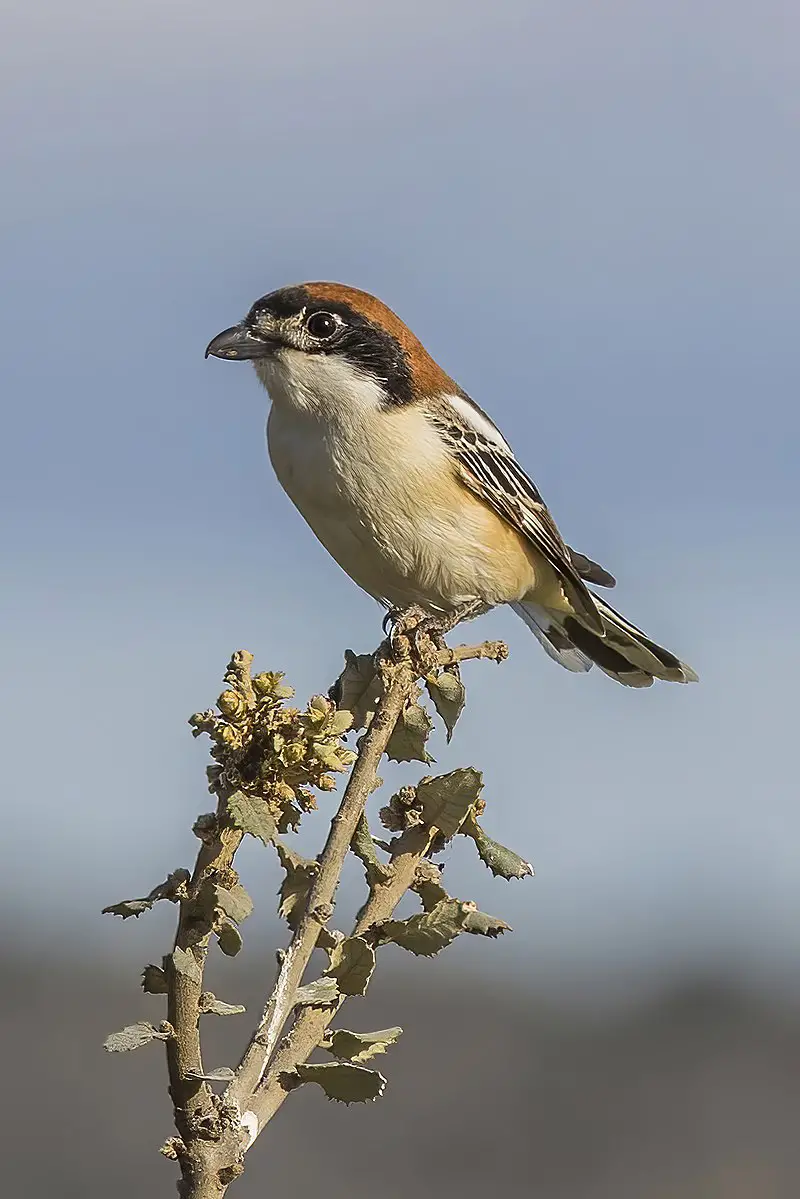
The Woodchat Shrike is a unique species of bird belonging to the shrike family. It has an unmistakable red-brown crown and nape that make it easily distinguishable from other birds.
This species mainly feeds on insects, but will also take small vertebrates if they are available.
They have adapted well to living in open wooded areas with scattered trees such as orchards, where there’s plenty of bare ground for them to hunt on.
During breeding season the Woodchat Shrikes can be found throughout Southern Europe, Middle East and Northwest Africa; while during wintertime these fascinating creatures migrate south towards tropical regions of Africa for warmer weather conditions.
All in all this species makes a fantastic addition to any outdoor environment – so why not give them some extra attention next time you spot one?Scientific classification:
| Kingdom | Animalia |
| Phylum | Chordata |
| Class | Aves |
| Order | Passeriformes |
| Family | Laniidae |
| Genus | Lanius |
| Species | L. senator |
Also Featured In: Most Beautiful birds of Greece, Italian Birds You Should Know
6. Hen Harrier
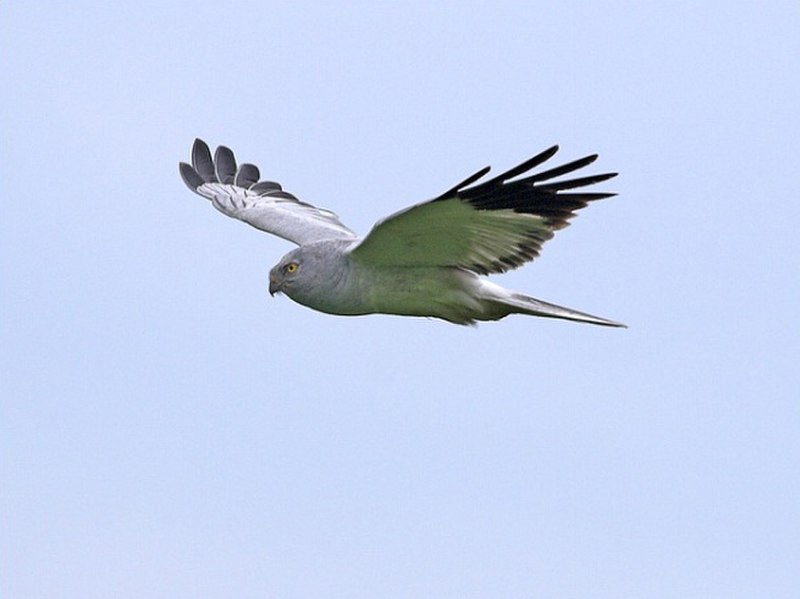
The Hen Harrier is a majestic bird of prey that breeds across Eurasia. It has the distinction of being one of the few birds to hunt free-roaming poultry, hence its name.
During winter months it migrates southwards towards Southern Europe and temperate Asia in search for more favourable climates than what can be found in its northern nesting grounds.
In milder regions like Great Britain and France, these raptors may remain year round where they are often spotted hunting over higher ground areas such as meadows or moorlands.
The hen harrier is an incredible sight with its dark wingspan soaring through the air while searching for small mammals or reptiles on which it feeds upon.Scientific classification:
| Kingdom | Animalia |
| Phylum | Chordata |
| Class | Aves |
| Order | Accipitriformes |
| Family | Accipitridae |
| Genus | Circus |
| Species | C. cyaneus |
Also Featured In: Birds found in portugal, Birds of Orkney
7. European Storm Petrel
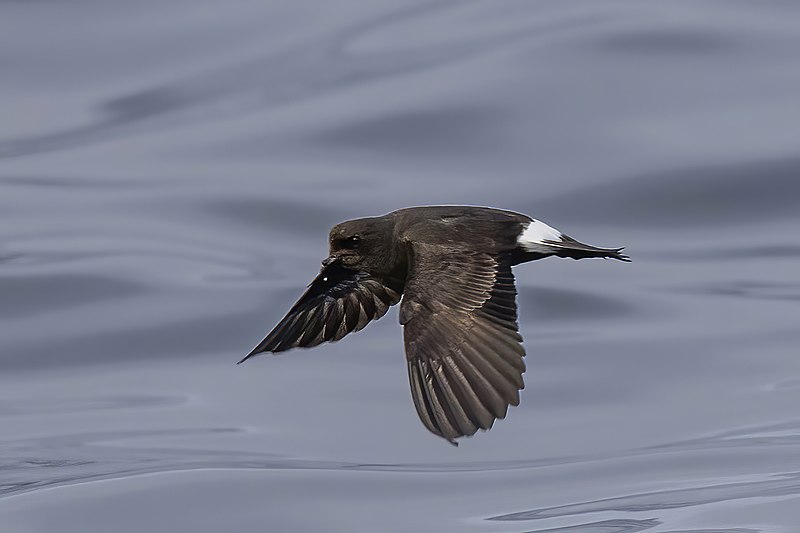
The European Storm Petrel is a small black seabird with a white rump and wings. It has an unusual, bat-like flight which flutters across the sky.
Its population mainly breeds on islands off the coasts of Europe, but can also be found in parts of North America as well as Japan and Korea.
They feed on planktonic crustaceans such as copepods by ‘pattering’ over water surface or dip-feeding where they plunge into the sea to catch their prey before flying away again.
These birds are elusive yet social when breeding; during this time they form colonies often near cliffs for protection from predators and harsh conditions at sea.Scientific classification:
| Kingdom | Animalia |
| Phylum | Chordata |
| Class | Aves |
| Order | Procellariiformes |
| Family | Hydrobatidae |
| Genus | Hydrobates |
| Species | H. pelagicus |
Also Featured In: Ireland Birds, Birds Live in Tunisia
8. Razorbill
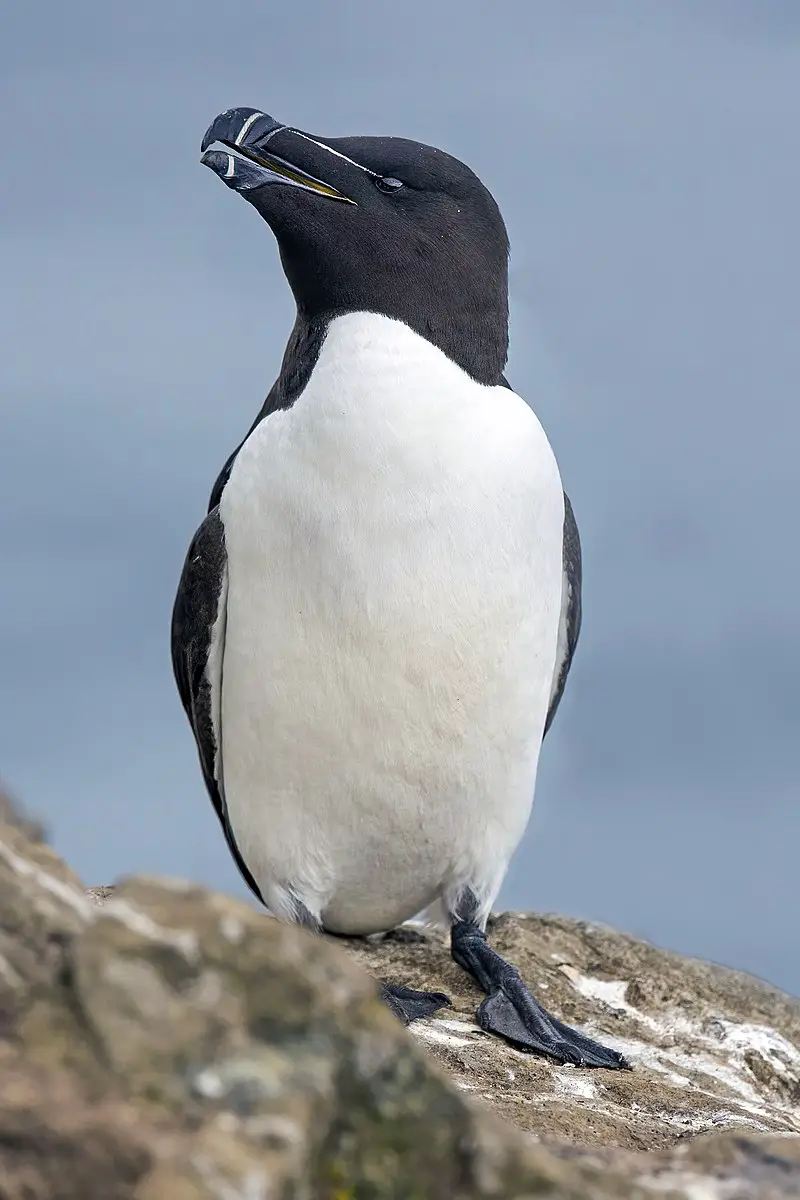
The Razorbill is a seabird of the family Alcidae and is closely related to the extinct great auk. It lives in subarctic waters of the Atlantic Ocean, primarily black with white underside and both male and female look identical.
They have long pointed wings which help them dive underwater for their food that consists mainly of fish and crustaceans.
Usually they form large colonies on cliffs or rocky islands but can also be found solitary during breeding season when pairs nest together in crevices or rock ledges near sea level.
During winter they migrate southwards into open water areas where they stay until spring arrives again before returning back to breed once more.
The razorbill’s population has been declining due to human activity such as overfishing so conservation efforts are being made by governments across Europe in order to protect this species from extinction.Scientific classification:
| Kingdom | Animalia |
| Phylum | Chordata |
| Class | Aves |
| Order | Charadriiformes |
| Family | Alcidae |
| Genus | Alca |
| Species | A. torda |
Also Featured In: Iceland birds, Shetland Islands Birds You Should Know
9. Merlin
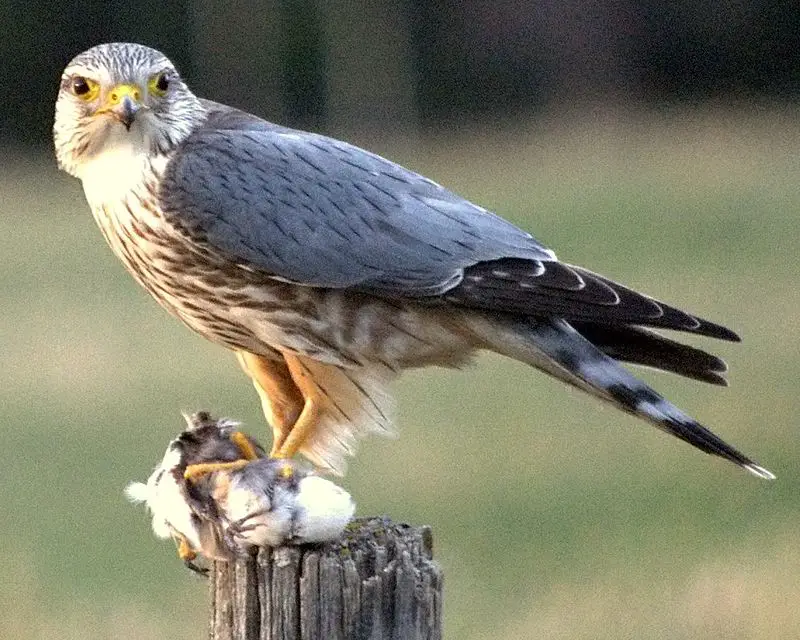
The Merlin is a small species of falcon found in the Northern Hemisphere. It has many subspecies across North America and Eurasia, and was once known as a Pigeon Hawk in North America.
Merlins breed mainly during summer months but some migrate to subtropical or northern tropical regions for winter season.
Males have wingspans ranging between 53-58 centimeters while females have slightly larger wingspan of 60-65 centimeters.
These birds are powerful fliers with fast aerial pursuits that can reach up to 50 mph.
Their diet consists mainly of insects, small mammals and other small birds which they hunt using their keen vision from high altitudes followed by swift dives down towards its prey at incredible speeds.
The Merlin continues to be an iconic symbol amongst bird enthusiasts due to its majestic beauty despite facing habitat loss around the world due to human activities such as deforestation and urbanization.Scientific classification:
| Kingdom | Animalia |
| Phylum | Chordata |
| Class | Aves |
| Order | Falconiformes |
| Family | Falconidae |
| Genus | Falco |
| Species | F. columbarius |
Also Featured In: Falcons Species, Most Common Scotland Birds
10. Ring-Necked Duck
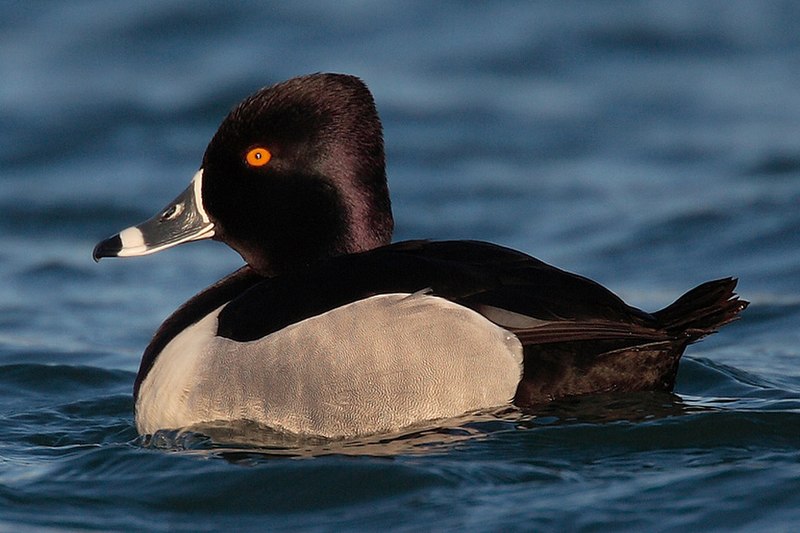
The Ring-necked duck is a popular diving bird found in freshwater ponds and lakes across North America.
They are known for their relatively small to medium size and distinctive ring around their neck, which gives them their name.
Interestingly, their scientific name is derived from a Greek word for an unidentified seabird and the Latin word for “neck.”
These ducks are great swimmers and divers, spending much of their time underwater searching for food, which mostly consists of aquatic vegetation and invertebrates.
They are also known for their striking appearance, with a beautiful coloring of black, gray, and white feathers.
The Ring-necked duck is a fascinating bird, and its unique characteristics make it a subject of interest for bird watchers and wildlife enthusiasts alike.Scientific classification:
| Kingdom | Animalia |
| Phylum | Chordata |
| Class | Aves |
| Order | Anseriformes |
| Family | Anatidae |
| Genus | Aythya |
| Species | A. collaris |
Also Featured In: Phoenix Birds You Should Know, Common Central Park Birds
11. Gannets
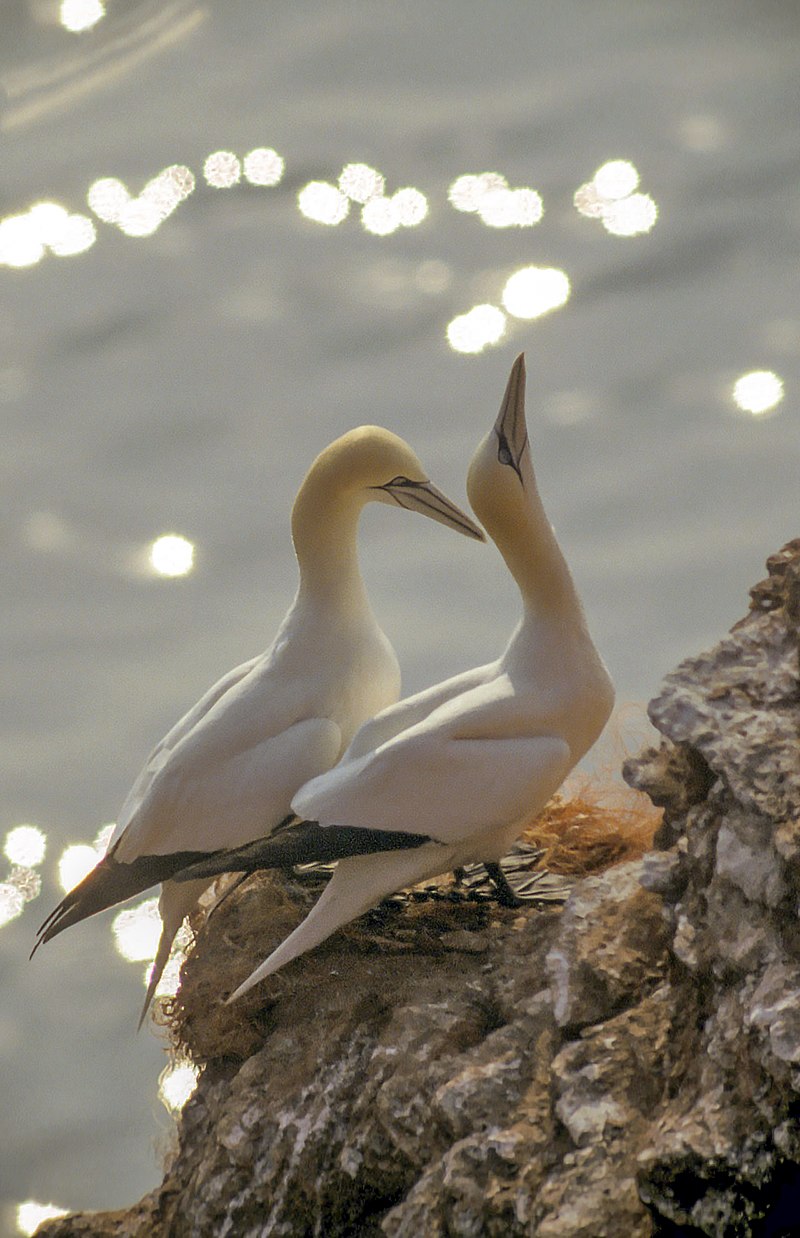
Gannets are marine birds that belong to the family Sulidae and are closely related to boobies. These large white birds have black-tipped wings, yellowish heads, and long bills.
With a wingspan of up to 6 1/2 feet, Northern gannets are the largest seabirds in the North Atlantic.
There are three species of gannets, with the other two found in the temperate seas of southern Africa and southern Australia.
Gannets are known for their spectacular diving abilities, plunging into the water at high speeds to catch fish.
They are also social birds, nesting in large colonies where they engage in courtship displays and territorial behaviors.
Overall, gannets are fascinating and impressive birds that play an important role in the marine ecosystem.Scientific classification:
| Kingdom | Animalia |
| Phylum | Chordata |
| Class | Aves |
| Order | Suliformes |
| Family | Sulidae |
| Genus | Morus Vieillot, 1816 |
Also Featured In: Birds You’ll Find in the Sea, Birds that Live in the Ocean
12. Red-Billed Chough
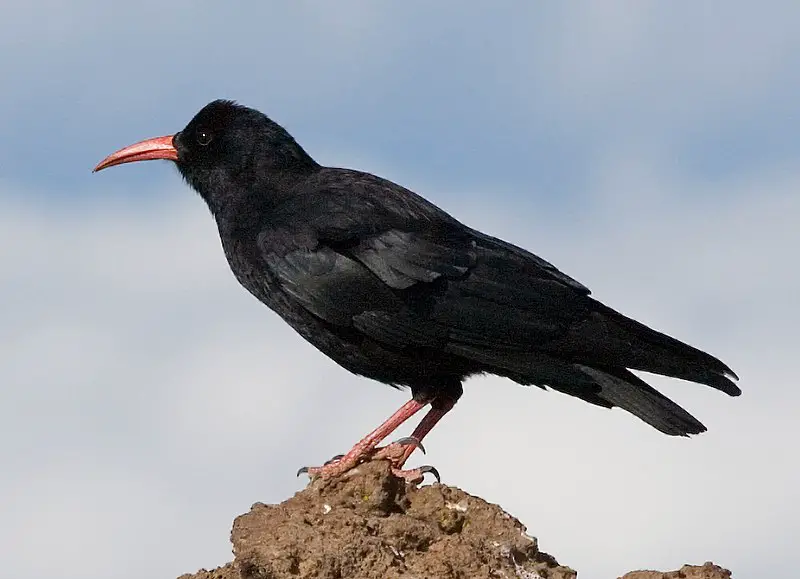
The red-billed chough is a member of the crow family and is found in rocky mountainous regions and coastal cliffs spanning from Ireland and Britain to central Asia, India, and China.
With its glossy black feathers and distinctive red beak, this bird is easily recognizable.
It is one of only two species in the Pyrrhocorax genus, with eight subspecies that vary slightly in appearance.
The chough prefers to live in high elevations and is often seen soaring over rocky cliffs or swooping down to catch insects with its sharp talons.
While once considered a symbol of bad luck, this playful and curious bird is now a beloved emblem of many Celtic cultures.
Despite conservation efforts, the population of the red-billed chough continues to decline due to loss of habitat and other environmental factors.Scientific classification:
| Kingdom | Animalia |
| Phylum | Chordata |
| Class | Aves |
| Order | Passeriformes |
| Family | Corvidae |
| Genus | Pyrrhocorax |
| Species | P. pyrrhocorax |
Also Featured In: Birds of Wales: Exploring Diverse Habitats and Conservation Efforts,
13. Turnstone
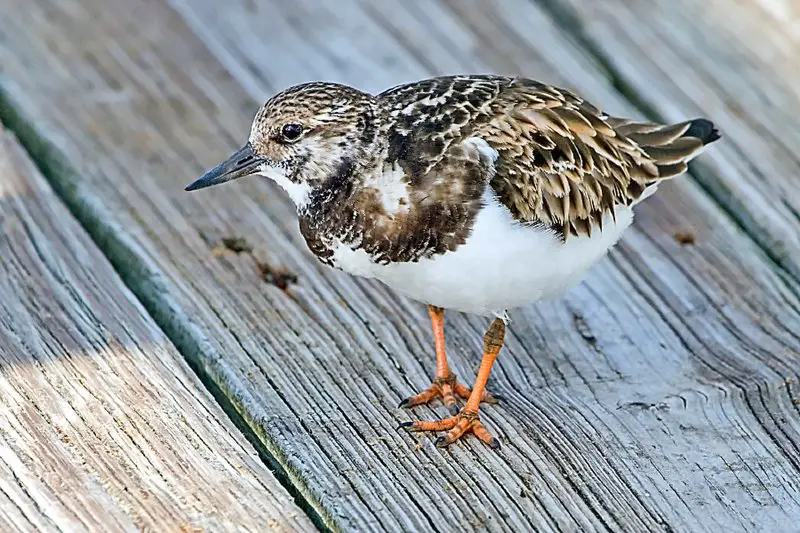
Turnstones are two species of birds in the Scolopacidae family, closely related to calidrid sandpipers. They are sometimes considered members of the Calidriini tribe.
The genus Arenaria, which includes the ruddy turnstone, was introduced by French zoologist Mathurin Jacques Brisson in 1760.
The name “arenaria” comes from the Latin word for “sandy place.” Turnstones are known for their habit of flipping over stones and other objects to find food, such as insects and small crustaceans.
They are migratory and can be found in coastal areas around the world, including rocky shores, tidal flats, and pebble beaches.
The two species of turnstones are the ruddy turnstone and the black turnstone, which is found primarily along the Pacific coast of North America.Scientific classification:
| Kingdom | Animalia |
| Phylum | Chordata |
| Class | Aves |
| Order | Charadriiformes |
| Family | Scolopacidae |
| Subfamily | Arenarinae |
| Genus | Arenaria Brisson, 1760 |
Also Featured In: Native Birds Of Middle Caicos, Common Birds Found near North Caicos
14. Eastern Subalpine Warbler
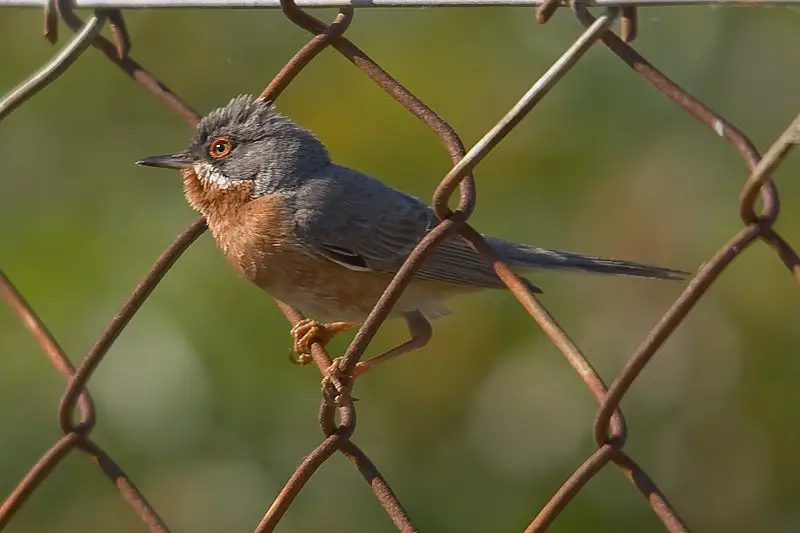
The Eastern subalpine warbler is a small typical warbler found in the southernmost areas of Europe. It has distinct male and female plumage.
It was first described by the German naturalist Peter Simon Pallas in 1764 and is also known by its binomial name, Curruca cantillans.
The specific name, cantillans, means “warbling” in Latin, as this species is known for its melodious song.
This bird breeds in subalpine habitats and prefers brushy areas with bushes and trees. The Eastern subalpine warbler feeds mainly on insects and other small invertebrates.
Despite its small size, it is a strong migratory bird, spending winters in Africa and returning to breed in Europe during the summer.Scientific classification:
| Kingdom | Animalia |
| Phylum | Chordata |
| Class | Aves |
| Order | Passeriformes |
| Family | Sylviidae |
| Genus | Curruca |
| Species | C. cantillans |
Also Featured In: Common Birds of Lesbos Island,
15. Wryneck
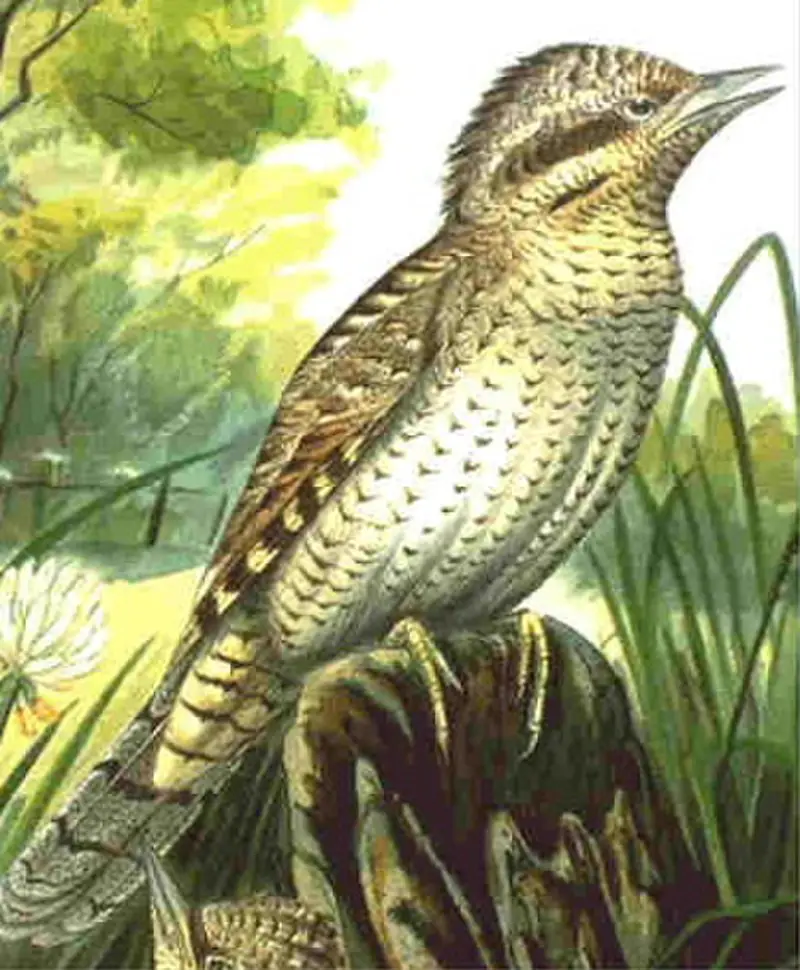
The wryneck is a unique type of small woodpecker found in the Old World. It belongs to the Jynx genus and is named after the Greek word iunx.
These birds are known for their ability to turn their heads almost completely around, which they use as a threat display when disturbed at their nest.
This behavior, combined with their hissing, has earned them the nickname “snake-bird”.
Although small, wrynecks are distinctive in their appearance and behavior, making them an interesting bird to observe.Scientific classification:
| Kingdom | Animalia |
| Phylum | Chordata |
| Class | Aves |
| Order | Piciformes |
| Family | Picidae |
| Genus | Jynx Linnaeus, 1758 |
Also Featured In: Birds of Norfolk, Most Popular Birds in Mallorca